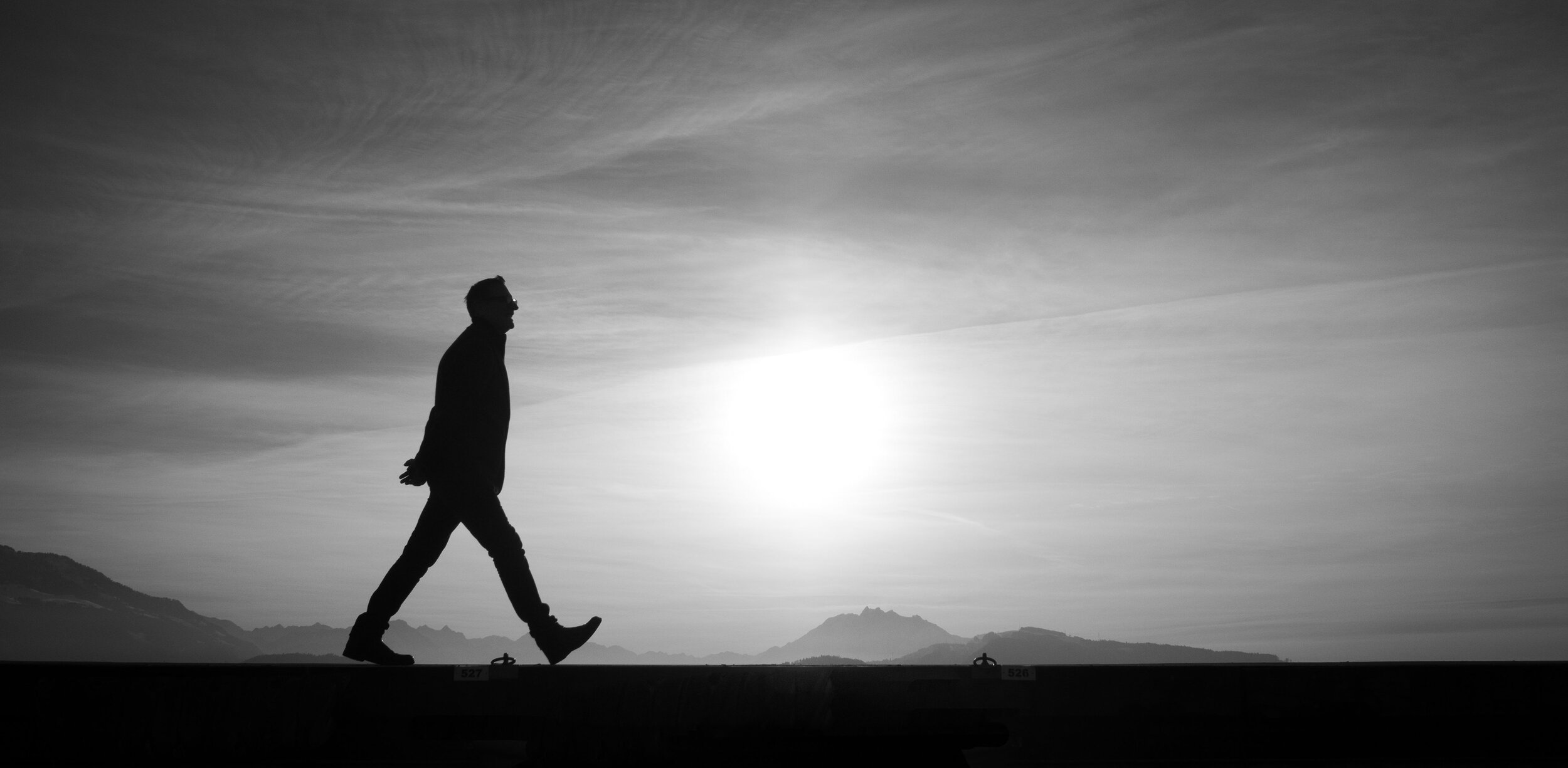Research Shows How Hiking Increases Creative Thinking

Research Shows How Hiking Increases Creative Thinking
Great minds think alike, and in the case of successful creative thinkers, their minds are telling them to go for a walk. A brief analysis of the most common habits among some of the greatest creative minds in history reveals that most had a penchant for, of all things, walking. Among the daily practices commonly shared by creative geniuses, walking seemed to distinguish itself as an essential component to the schedules of many successful artists, writers, musicians, and entrepreneurs.
Many of the world's most renowned creative thinkers even share a similar personal experience of having inspiration strike during a long walk or hike. To reference one of history's most prolific writers, Charles Dickens was famous for incorporating walking into his daily thinking routine. He would disappear on walks for hours at a time, sometimes walking the length of a marathon, to be alone with his thoughts and ideas. Throughout his lifetime and the countless miles he traversed, Dickens went on to author 15 novels, five novellas, and hundreds of short stories and non-fiction articles.
Similarly, Apple co-founder, Steve Jobs integrated walking into the creative processes of his business endeavors. Jobs was notorious among entrepreneurial circles for holding walking meetings, often when he felt his business partners and associates were in a creative rut. Jobs' well-known creative perambulations have proliferated throughout Silicon Valley, most famously to Mark Zuckerberg, who to this day holds walking meetings for his business colleagues.
Despite the many anecdotal accounts of world-class creative thinkers using walking and hiking as a creative enhancer, the only scientific research available focused on aerobic exercises, like running, jogging, or sprinting, and the subsequent effects it had on mood. The 2010 study famously observed how aerobic exercise could result in mood improvement, memory performance, and even some minor increase in creativity. However, the 2010 study on aerobic exercise failed to draw clear connections between exercise and the improvement of creativity. Still, while aerobic exercise can result in mood improvements, this idea of walking to enhance one’s creativity prevailed, nonetheless.
It wasn’t until four years later that a 2014 study conducted by Stanford University researchers, Marily Oppezzo and Daniel L. Schwartz, helped to draw a much clearer relationship between an increase in creativity and walking. "Many people claim they do their best thinking when walking," said Oppezzo, co-author of the study. Yet, despite how widely spread this notion had become, the fact of the matter remained that the idea was only supported by anecdotal evidence rather than scientific. So, Oppezzo and Schwartz sought to scientifically prove whether walking had a tangible impact on creativity or not. The two researchers developed a series of four experiments meant to test whether walking increases ideation in real-time and in the time shortly after, as anecdotally described by many creative geniuses throughout history.
Check Out Our Best Selling Journals
The Original Creative Thinking Guided Journal
The All-Ages Creative Thinking Guided Journal
The study scientifically measured the potential impact that walking, or not walking, could have on an individual's capacity for divergent thinking. Researchers chose to measure divergent thinking as it is commonly associated with strongly developed creative mindsets. Divergent thinking is a thought process that promotes ideation, free flow, and the exploration of new, possible solutions. In order to measure divergent thinking in the participants of the study, the participants were given a household item, like a button, and then asked to brainstorm alternate uses the object may have outside of the object's normal usage. For example, when asked to think of alternate uses for a button, one participant responded as a teeny, tiny strainer. The results were then compared to identify the effect that sitting indoors, walking indoors, or walking outdoors has on the subjects' potential for productive ideation.
The results of Oppezzo and Schwartz's study ultimately help to explain the previously observed phenomena that tied highly creative individuals to consistent amounts of walking. It seems, much as the anecdotal evidence has suggested, that many creative geniuses dedicated regular amounts of time to walk for a reason. Oppezzo and Schwartz were able to conclude that walking definitely increases an individual's capacity for creativity, imagination, and divergent thinking. More specifically, the study found that participants who walked were more likely to produce higher rates of creative answers and ideas than participants who had only been sitting. Researchers observed a nearly 60% increase in creativity from participants who were asked to walk, despite the setting. The study also found that creativity seemingly continued to flourish even after participants who had been asked to walk were seated. This research helps to suggest that incorporating time to walk into one's daily routine could have a beneficial impact on an individual's creative output and overall creative mindset.
A subsequent area of focus for the Stanford University study was to determine whether the setting in which someone walks affects their level of creativity. It has already been proven that being outdoors has several cognitive benefits. However, Oppezzo and Schwartz were keen on discovering if an increase in creativity was one of the cognitive benefits associated with being outside. In this case, anecdotal evidence from creative geniuses seemed to be conflicting as some went on walks throughout their respective cities. In contrast, others much preferred the serene solitude of nature.
By incorporating walking indoors and walking outdoors into the experiment, Oppezzo and Schwartz could better isolate their results to determine the specific impacts that each scenario can have on creativity. The researchers studied the impact on creative thinking that walking indoors on a treadmill had versus walking outdoors in the fresh air. The result is that researchers witnessed participants who walked outside often produced the most novel, inventive and insightful answers of the overall experiment. This finding strengthens the validity behind the idea that a long walk or hike through nature could be the solution to breaking out of even the deepest of creative ruts.
However, when comparing to the results of participants who walked indoors, the distinction was fairly minuscule. Even Oppezzo was surprised, commenting, "I thought walking outside would blow everything out of the water, but walking on a treadmill in a small, boring room still had strong results." The study found that walking indoors and outdoors resulted in an enhanced creative mindset to a similar extent. The lack of differentiation between walking indoor or outdoor ultimately suggests that the singular factor contributing to the increase in creative thinking is not necessarily related to the setting, but rather rooted in the action of walking.
The study's results reveal that walking can be a consistent method of improving one's creativity and imagination levels. As proven by the study, the benefits of going for a walk would also improve all aspects of an individual's life. Additionally, the lack of difference between walking indoors and outdoors is especially beneficial to the many individuals who live in major metropolitan areas and do not have easy access to what is normally considered open nature. While the study does encourage finding the time to walk outdoors, the results conclude that setting does not determine whether one reaps any creative benefits, but rather the act of walking does.
Taking the time to go on a walk, even a short one, can be incorporated into even the busiest of contemporary schedules. Individuals who feel stuck or creatively drained are encouraged to find the time for a walk or better yet, a hike. Walking can provide the perfect time to be alone with ideas and thoughts, while simultaneously helping individuals become more receptive to new ideas. Learn from the habits of the many creative geniuses from throughout history and go for a walk. Whether it's a brisk walk around the block, a long stroll down by the beach, or a power hike through the local outdoor trails, these are all scientifically proven to help boost creativity, imagination, and divergent thinking.






